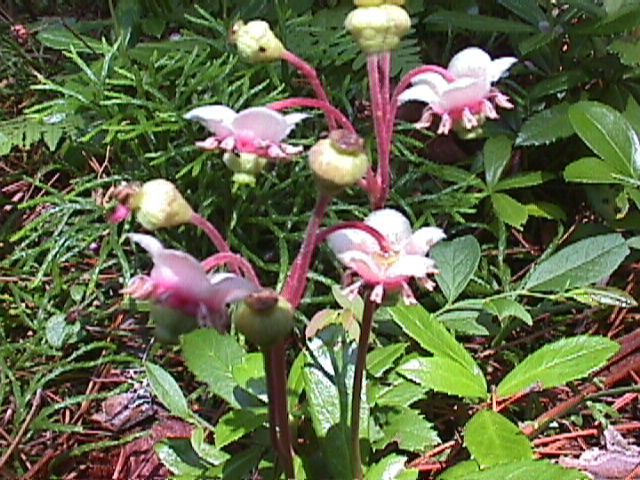


A small evergreen perennial that grows 3-10 inches tall, pipsissewa has shiny, bright green, toothed leaves arranged in whorls along the stem. Small white to pink flowers of pipsissewa (July - August) are clustered at the end of an erect stalk. When bruised, the plant's leaves have a peculiar taste that is astringent and sweetish and at the same time pleasantly bitter."It-breaks-into-small-pieces" is what the Cree name pipsisikweu means, because the pipsissewa's leathery evergreen leaves contain a substance that was supposed to dissolve kidney stones. (It does not, in fact.) Pipsissewa served Indians in a variety of other remedies, too. The Mohegans and Penobscots steeped it in warm water and applied the infusion externally to heal blisters. The Thompson Indians of British Columbia pulverized pipsissewa and applied it in wet dressings to reduce swelling of the legs and feet. The Catawbas dubbed the plant fireflower and extracted a backache remedy from it. The Chippewas used a decoction of the root as eye drops for sore eyes.
Taken internally, pipsissewa was popular both with Indians and with the pioneers who had picked up its use from them, especially for rheumatism and kidney problems. It served as an astringent and diuretic in folk medicine from the days of Daniel Boone on through the Civil War and afterwards, and was early adopted by official medicine. From 1820 to 1916 pipsissewa was listed in the U.S. Pharmacopeia. Until the early 20th century, pipsissewa tonic was a staple home remedy in many rural North American households, and the herb is still to be found as one of the traditional ingredients of root beer.